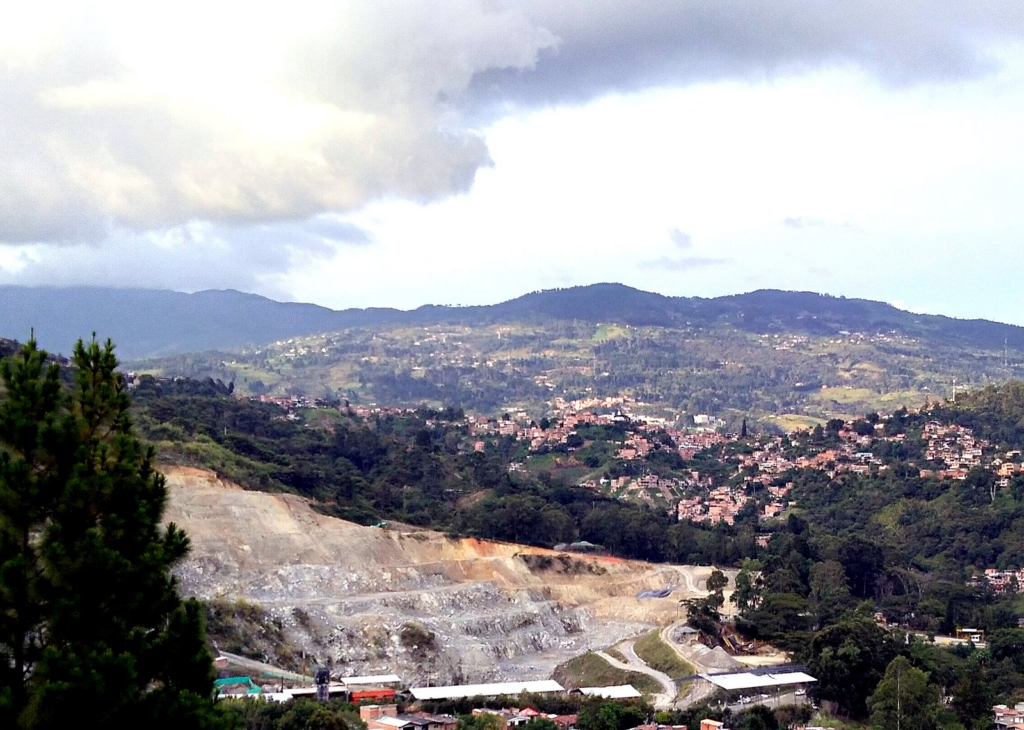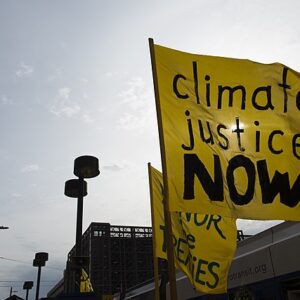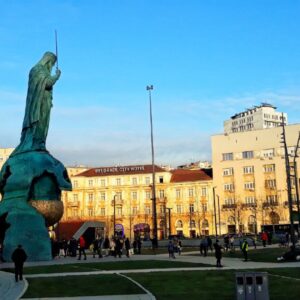The mothers were always right….
By Isabella Crouch • February 11, 2025
Despite the 2016 Peace Deal with the FARC, the unresolved horrors of the Colombian armed conflict continue to haunt and divide the country. This January, after almost a decade of searching, the Colombian tribunal the Special Jurisdiction for Peace (JEP) announced the discovery of human remains belonging to at least 4 individuals in an area which, for years, had been rumoured to be a mass grave.
During the decades of conflict, thousands of people were displaced, killed or disappeared at the hands of a variety of actors: state-forces, the paramilitary, the cartels and the guerrilla. Under former conservative president Álvaro Uribe, in 2002 ‘Operation Orion’ was launched, supposedly to remove the guerrilla from a neighbourhood on the outskirts of Medellín: Comuna 13. Now a tourist hotspot brimming with art and music, Comuna 13 was once one of the city’s most violent neighbourhoods.
On October 16 and 17 2002, a combined force of around 1,500 – made up of the Colombian Army, the police and special military forces – entered the Comuna, equipped with tanks and armed helicopters. The operation quickly became a brutal and largely indiscriminate massacre, after which the paramilitary unit ‘Cacique Nutibara’ took control of the neighbourhood. What followed was a spike of arbitrary detentions and hundreds of disappearances from 2002 – 2003, and the beginning of the infamous False Positives scandal; whereby civilians were dressed up as guerrillas and killed in order to meet military targets – for which soldiers were then rewarded. The victims of this scandal were overwhelmingly from poor neighbourhoods such as Comuna 13 or Soacha, just South of Bogotá. Álvaro Uribe and his supporters continue to defend the operation as successful.

Since the early 2000s, the families – particularly the mothers – of the hundreds of individuals disappeared following Operation Orion have claimed to know exactly where the remains of their loved ones were discarded: a nearby dump for construction waste called ‘La Escombrera’. Unbelievably, the claims of these bereaved mothers’ have been ignored, and for years the site continued to be used as a dump for construction waste, making their search efforts near impossible. In 2016, the Peace Deal brought this to a halt and an official search effort finally began via the Unit for the Search of Disappeared Persons (UBPD). The discovery of human remains has finally confirmed the mothers’ claims, but has also unearthed underlying tensions across the country, through the medium of urban art.
What happened?
On Sunday 12 January 2025, artists and activists in Medellín came together to paint a large mural in solidarity with the mothers and to demand the truth about extrajudicial killings during Uribe’s presidency. Strikingly large yellow letters read: ‘LAS CUCHAS TENIAN RAZON’ – conveying a simple message: the mothers were right. The next day, following the orders of Medellín’s Mayor Federico Gutiérrez, the mural was covered up with grey paint. The Mayor, and other figures on the political right, claim the mural aspires to create chaos and damages public goods.
However, in response to the immediate censoring of the mural, art collectives, activists and ordinary citizens have come together across the country in support of the mothers and their search for truth. The simple but powerful message has been painted in various cities, often accompanied by portraits of the mothers. Murals have popped up in Bogotá, Cali, Bucaramanga, Popayán and there are plans for more to come circulating on social media. In the words of graffiti collective Puroveneno ‘si tapan uno pintamos miles’ – if they cover one, we will paint thousands. In turn, the phrase has even been painted outside of Colombia in London, Santiago, Berlin and other cities.
Initially, these murals were principally an act of solidarity with the people of Medellín, but they have developed into an act of resistance rejecting the elimination of the victims’ truth which demands the full history of Colombia’s conflict be known. Unfortunately, Medellín is not alone in its history of extrajudicial killings and disappearance and, as such, the message resonates with those affected all across the country.
Backlash
However, as in Medellín, the murals in other cities have been defaced and covered up, but this time without official orders.
The desire to cover up a mural in solidarity with grieving mothers and in honour of their lost children may, to many, seem extremely insensitive and disrespectful. However, the divisions that linger in Colombia following the conflict run so deep that there are citizens who view the murals themselves as disrespectful and the act of covering them as the correct thing to do. For example, in Bogotá it has been covered at least twice, but quickly repainted each time. In Cali the mural was defaced by an armed man, while in Bucaramanga a group of students covered the mural, accusing the artists of politicising the grief of others to cover up the failures of current left-wing president Gustavo Petro. Petro himself has supported the murals, calling their censorship ‘fascism’. As such, the murals and the topic of La Escombrera have been politicised and what started as a peaceful act of solidarity has been made into a new battle ground for the Colombian right and left.
The politicisation of the issue that stems from historic sectarian divisions detracts from the struggle of the families whose loved ones are still missing and the injustices suffered by the victims themselves. What these murals are saying is that their stories deserve to finally be heard. Therefore, it is crucial to put political opinions aside and face the facts that remain after technical and forensic investigation: there were thousands of extrajudicial killings under Uribe, Operation Orion claimed many innocent lives, human remains have been found in La Escombrera, and the mothers were always right.
While the resistance to these murals shows that divisions in the country are alive and well, each time one is covered, artists, activists and citizens come together to restore it in a beautiful display of peaceful collective action. In one mural by Bogotá artists, 3MiROo, Krow and Tosan, the message has evolved to say, ‘the mothers were right, are right and will always be right’.
As such, the overwhelming message is one of resistance, solidarity and determination to never return to silence, secrecy and suppression.
About the author
Isabella Crouch is pursuing a Master’s in Latin American Studies at the University of Oxford. Her research explores the functions of urban art and creative expression in peacebuilding and resistance in post-conflict societies, with a particular focus on Colombia. Isabella is currently researching the relationship between artistic expression, social movements and resistance to state violence, during the 2021 national strike in Colombia and the 2019-2020 protests in Chile.
Photos found using the Creative Commons search tool, one from 3MiROo, who gave permission via Instagram and those of the murals in other cities were provided by my boyfriend and his friends (who are in Colombia and graffiti artists).
Images
Dgreusard, “File:20210108 171726-Escombrera-opt.jpg,” Wikimedia Commons, January 9, 2021. https://commons.wikimedia.org/wiki/File:20210108_171726-Escombrera-opt.jpg




